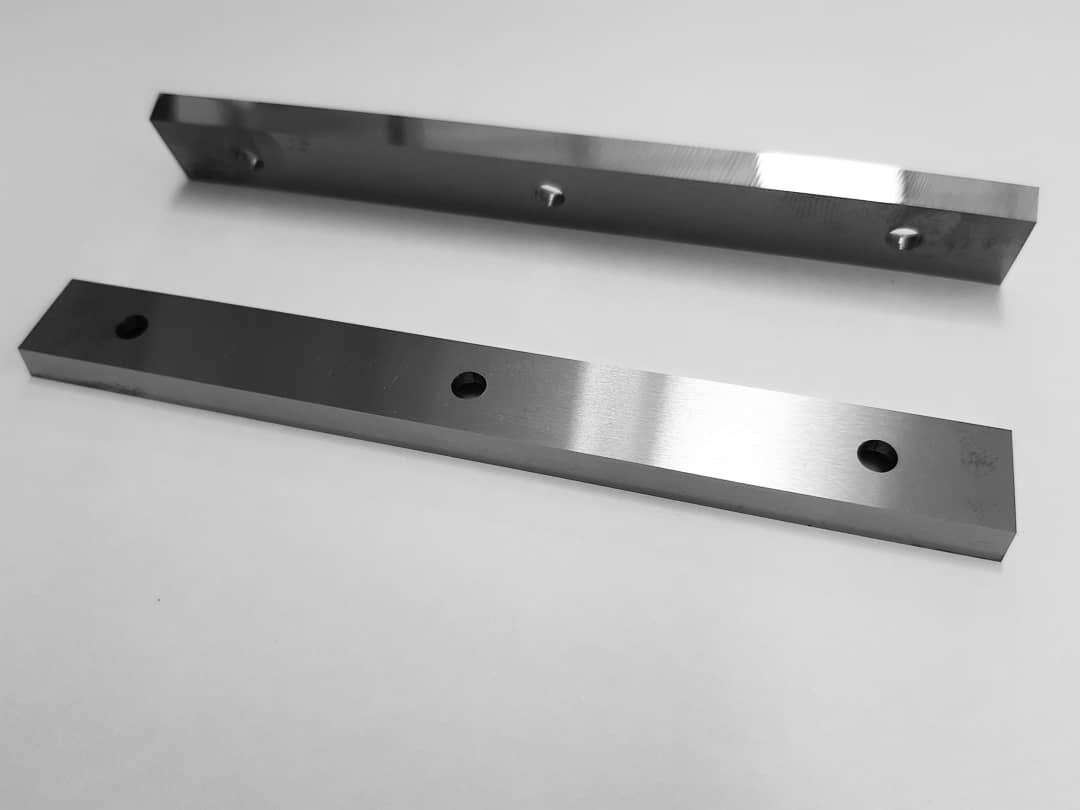In the dynamic world of industry, efficiency and precision are not just desirable goals; they are the pillars upon which the success of production processes is built. In this context, cutting tools become fundamental players, and among them, tungsten carbide blades stand out for their exceptional properties. This material, renowned for its extreme hardness and superior resistance to wear, has revolutionized the way multiple industries approach material cutting, from paper to metal and wood.
With the constant evolution of industrial demands, the need for cutting tools that offer durability, precision, and resistance in extreme conditions becomes more crucial than ever. Although the initial cost of tungsten carbide blades may be higher compared to their steel counterparts, the benefits they provide—such as increased productivity and significant reductions in long-term operating costs—position them as a smart investment for any industrial process seeking excellence.
What is Tungsten Carbide?
Tungsten carbide is a chemical compound formed by tungsten and carbon atoms, with the formula WC. This material is renowned for its extreme hardness, comparable only to diamond, and its impressive wear resistance, making it a preferred choice for industrial applications that require exceptional performance in demanding conditions.
Tungsten, one of the hardest known metals, combines with carbon to form a ceramic material that is not only incredibly hard but also highly resistant to deformation and abrasion. This combination process is carried out through sintering, a method that involves compacting tungsten and carbon powders under high pressure and temperatures. The result is a dense and durable material that maintains its structural integrity even under intensive use.
Tungsten carbide is not only known for its hardness but also for its ability to maintain a sharp edge for extended periods, reducing the need for frequent re-sharpening. Additionally, its resistance to high temperatures and corrosion makes it ideal for industrial environments where other cutting tools might fail or wear out quickly.
Over the years, tungsten carbide has found applications across a wide range of industries, from the manufacture of cutting tools to mining and jewelry. In particular, its use in industrial blades has transformed cutting processes that were previously costly and inefficient, allowing companies to increase productivity.
Tungsten Carbide Blades
Tungsten carbide industrial blades have become essential tools across a wide range of sectors due to their superior cutting properties. These blades are designed to withstand the demands of industrial processes that require precision, durability, and resistance, offering performance that far exceeds that of blades made from other materials.

Distinctive Features
What truly distinguishes tungsten carbide blades is their exceptional hardness. This characteristic allows them to maintain an extremely sharp edge for an extended period, which is crucial in applications where a clean and precise cut is required. Additionally, their wear resistance ensures that the blades remain effective even after long periods of continuous use, minimizing the need for downtime for re-sharpening or replacement.
Another key advantage is their resistance to high temperatures. In many industrial applications, the heat generated during the cutting process can damage conventional cutting tools, but tungsten carbide blades can withstand these temperatures without losing their edge or structural integrity. This makes them ideal for high-speed cutting processes and for working with materials that tend to generate a lot of heat.
Types of Tungsten Carbide Blades
There are different types of tungsten carbide blades, each designed for specific applications:
- Straight blades: Used in longitudinal cutting processes, such as in the paper and cardboard industry.
- Circular blades: Employed in the cutting of metals, plastics, and other materials, where precision and clean cuts are crucial.
- Serrated blades: Designed to cut hard or fibrous materials, such as wood and certain plastics, offering a more aggressive and efficient cut.
- Special profile blades: Customized for specific applications, where the blade design can be optimized for particular tasks in industrial production.
Manufacturing and Finishing Processes
The manufacturing of tungsten carbide blades is a highly specialized process that requires precision and strict control. Sintering, a process in which tungsten carbide powders are compacted and heated to high temperatures, is key to producing the dense and durable structure that characterizes these blades. After sintering, the blades undergo a sharpening and finishing process that ensures each edge is perfectly aligned and that the surface is smooth enough to reduce friction during cutting.
Additionally, in some applications, the blades may be coated with additional layers of materials resistant to wear or corrosion, further enhancing their lifespan and performance in challenging industrial environments.

What Are the Applications of Tungsten Carbide Blades?
Tungsten carbide is a versatile material that has found its place in a wide range of industrial applications, becoming indispensable in several major industries:
Paper and Cardboard Industry
In the paper and cardboard industry, tungsten carbide blades are widely used for cutting, rewinding, and die-cutting materials. Since paper and cardboard are abrasive materials, cutting tools must be extremely durable to maintain precision over time. Tungsten carbide blades are ideal in this environment, as they can maintain a sharp edge for prolonged periods, reducing downtime and increasing production efficiency.
Metalworking Industry
In the metalworking industry, tungsten carbide is used in a variety of cutting tools and machinery for processing hard metals. These tools are essential in operations such as cutting metal sheets, tubes, and profiles, where precision and the ability to handle tough materials are critical. Tungsten carbide blades not only cut precisely but also resist wear and the heat generated during these intensive processes.
Woodworking Industry
The woodworking industry also benefits from the use of tungsten carbide, particularly in saws and milling machines that cut wood and derived products like particleboard and MDF. The ability of these blades to maintain a sharp edge while cutting fibrous and abrasive materials is crucial for achieving clean, precise cuts, which is essential in the production of high-quality furniture and other wood products.
Textile Industry
In the textile industry, tungsten carbide blades are used in cutting machines for fabrics and composite materials. The durability of these blades ensures that they can cut delicate materials such as silk or wool, as well as thicker, tougher fabrics, without losing effectiveness. This is especially important in mass production, where consistency and cutting quality are fundamental to maintaining high manufacturing standards.
Plastics Industry
Tungsten carbide is also widely used in the plastics industry, where blades must cut materials that can be difficult to work with, such as fiber-reinforced plastics. The hardness and wear resistance of tungsten carbide ensure that the blades can cut these materials without degrading quickly, which is essential for maintaining production efficiency.
Other Specialized Applications
In addition to the industries mentioned, tungsten carbide has applications in specialized sectors such as mining, where it is used in drill bits and other drilling tools, and in the automotive industry, where it is employed in machining tools and molds. Its ability to withstand extreme conditions makes it ideal for environments where other materials simply could not perform at the same level.
Maintenance and Sharpening of Tungsten Carbide Blades
Proper maintenance of tungsten carbide blades is crucial to maximize their lifespan and ensure consistent performance. Despite their hardness and durability, these blades require specific care to maintain their edge and effectiveness over time.
Sharpening is an essential part of maintenance. Given that tungsten carbide is an extremely hard material, sharpening must be done with specialized tools, such as diamond wheels, to avoid damage. It is important to perform this process regularly, depending on the frequency of use and the type of material being cut.
In addition to sharpening, it is fundamental to handle the blades with care to prevent fractures, as, despite their resistance to wear, they can be vulnerable to strong impacts. Proper storage and protection against bumps or drops are also key to prolonging their lifespan.
At Cuchillas Castillo, we offer a wide range of blades for sale and specialized services in maintenance and sharpening of tungsten carbide blades. Our team uses high-precision tools and advanced techniques to ensure that your blades maintain optimal performance. Trust our expertise to prolong the efficiency and durability of your cutting tools.

